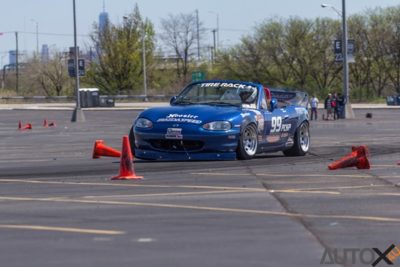You may have heard, “Create a plan and work the plan.” Of course, to do this well is easier said than done. So we turned to Tamra Hunt, 2015 SCCA Solo National Champ and Rookie of the Year, to provide you with the guide posts to help you maximize your season.
Pre-Season
Before the season starts, keep up on your tire research (if your season has already started, then there’s no time like the present to make your adjustments). Tire choice is critical to being competitive. Especially in the world of 200tw tires for autocross, there are a variety of tires as companies fight to have the most competitive offerings, often changing or adjusting their tires. Considering your tires will last a good part of the season, it’s critical to pick the right tires from the start.
If there are any improvement plans for your car, installing new parts during the off season is a good idea. Check the condition of your car (tires, fluids, alignment, etc.) and schedule any work for the car, including alignment, prior to your first planned event.
Next, as clubs release their calendars, I recommend keeping track of events you plan to attend. If you strive for any year-end awards, it is usually critical to attend a minimum/specific number of events.
Finally, set your goal. For some, your goal may be to work on car setup or install more parts to make the car better in some way. Others might focus on improving their own driving skill, the “nut behind the wheel” mod.
Start of the Season
Your first event(s) is when you knock the “rust” off and set the foundation for the rest of the season. Whether you are a novice or an experienced autocrosser with a full prepped car, I recommend identifying and fixing any large handling problems with the car early on in the season. You can have other people ride along with you or drive your car to give advice on how to get it to handle neutrally (no excessive understeer or oversteer).
If you have the opportunity to take a driving school, I highly recommend it. Many schools offer incredible seat time with top caliber instructors where you can get rid of bad habits, learn how to approach the course better, and set a great foundation for the remainder of your season.
During the Season
At events, get in the habit of walking the course multiple times, preferably with an experienced autocrosser. Discuss things such as where you should be looking (key cones), car placement, and how to approach technical sections. My goal is to always be able to replay the course in my mind and know where I want my car to be, and where I want to be looking, through every section of the course. If your club allows ride alongs, you can also see if experienced drivers are willing to let you ride as a passenger. This gives you the opportunity to not only see the course, but evaluate different driving techniques.
Alternately, taking an instructor is always a fantastic opportunity to get personalized advice.
To continue working on either your driving skill or car setup, I recommend attending various clubs that run at different sites. Learning the nuances of a runway course (tends to be more transitional) vs a large parking lot (tends to be more sweepy) can be valuable. In addition, any differences in surface (sealed asphalt, pavement, or concrete) or smooth vs bumpy lots can also be a good test of your and your car’s ability to adapt.
Don’t forget your goals along the way. If your goal is to work on car setup, you may end up continuing the process throughout the season. However, if your goal is to focus on the “nut behind the wheel,” then once the car is handling well enough, it’s time to learn to drive it and making driving adjustments to get the car to do what you want it to do and go where you want it to go. I would avoid making any little tweaks to the setup and focus on how to drive the car. Keep a consistent setup and regularly check tire pressures (tire pressures can create large handling differences); double check your shock settings, etc.
At some point during the season, it is also a good idea to give your car a once over. Get the alignment checked (it’s not uncommon for alignment settings to slip over time), and consider if you should do any regular maintenance (fluids changes, spark plugs, etc.).
Conclusion
If you have two takeaways from this article, they are 1) to prepare for the season and events (as they say, fail to prepare, prepare to fail) and 2) to set a goal and stick to it (as they say, jack of all trades, master of none. Working on one thing at a time is the best way to improve quickly).


 ACCESSIBILITY
ACCESSIBILITY